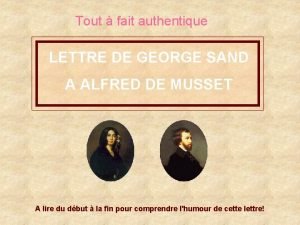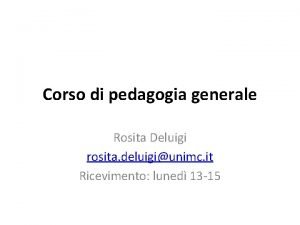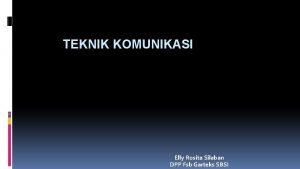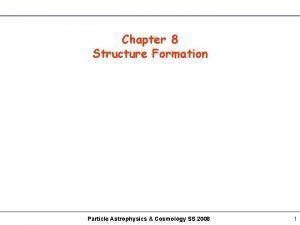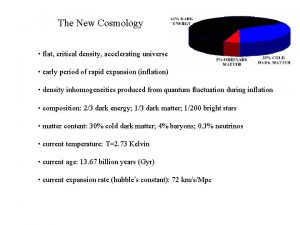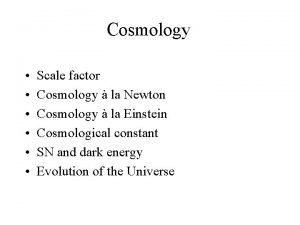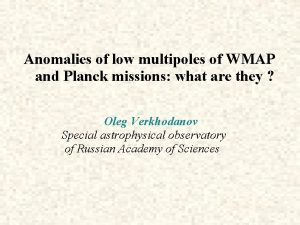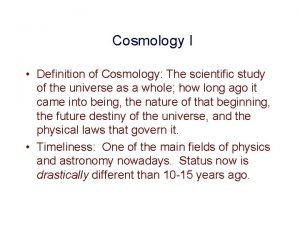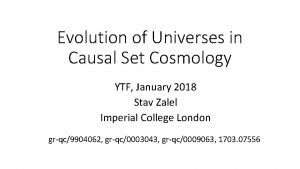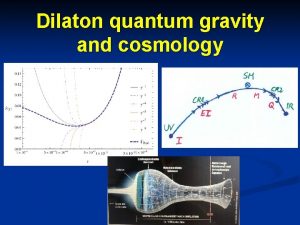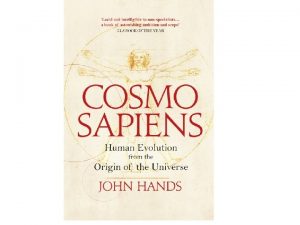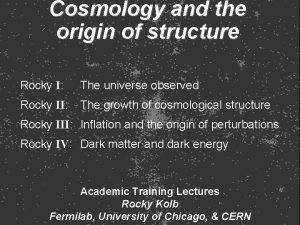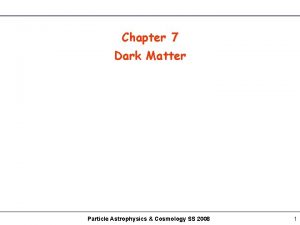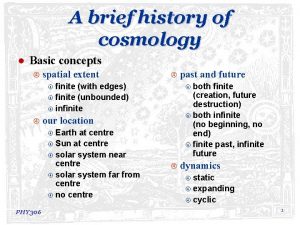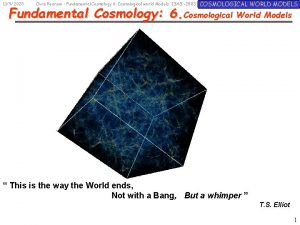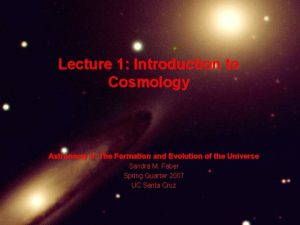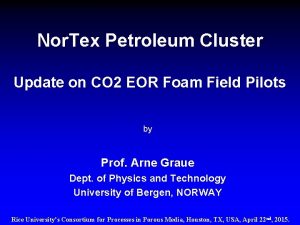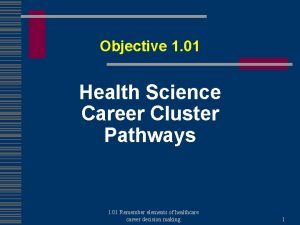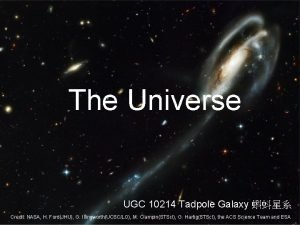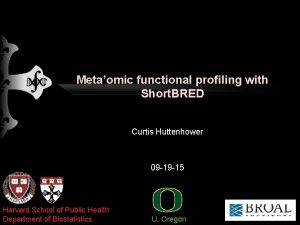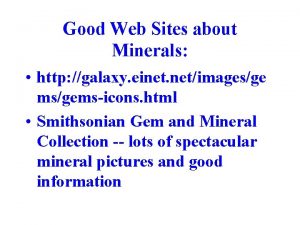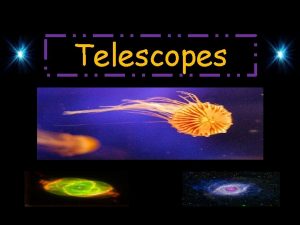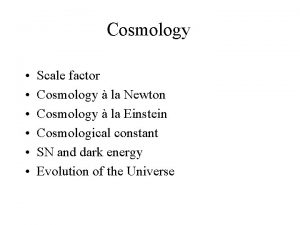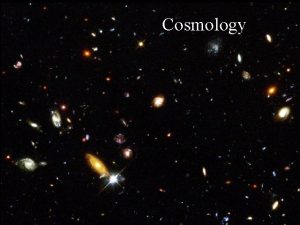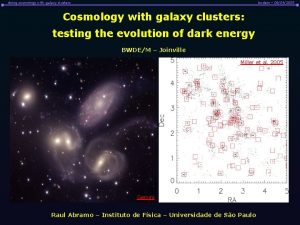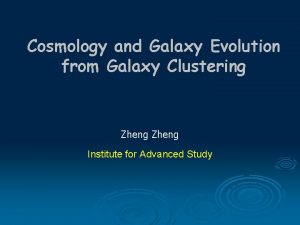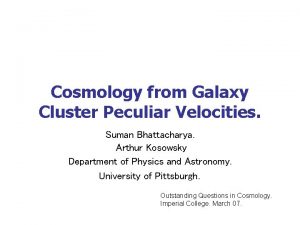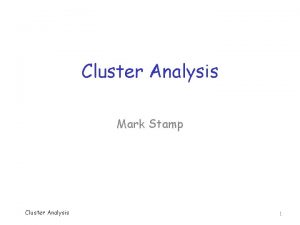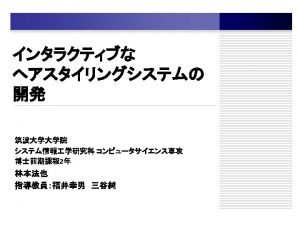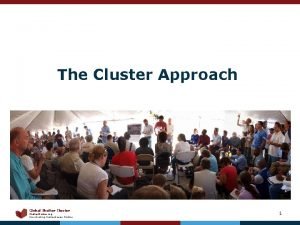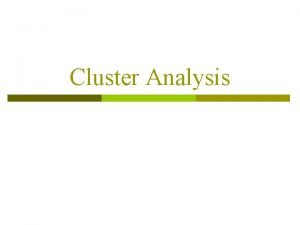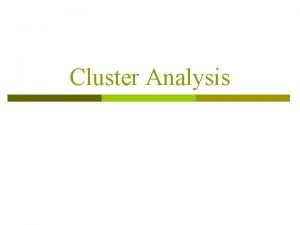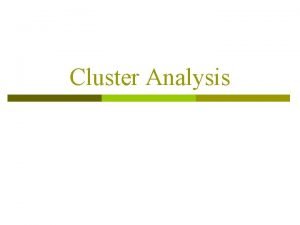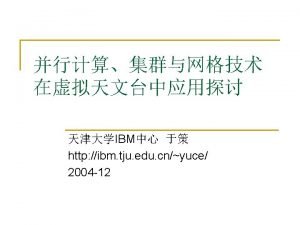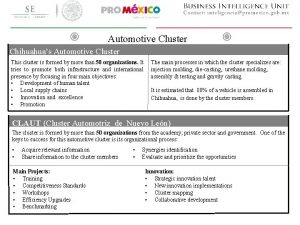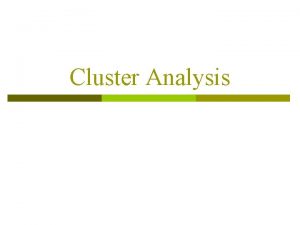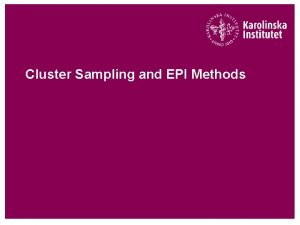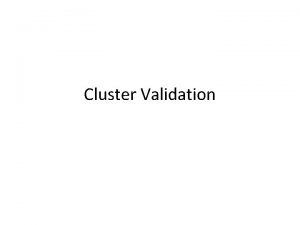EMUe ROSITA Complementarity for Galaxy Cluster Science Cosmology




























- Slides: 28

EMU/e. ROSITA Complementarity for Galaxy Cluster Science (Cosmology) Thomas Reiprich Argelander Institute for Astronomy Bonn University http: //dark-energy. net 2013 2012

e. ROSITA Team PI: Peter Predehl (MPE) Project Scientist: Andrea Merloni Co-Is: Hans Böhringer, Ulrich Briel, Hermann Brunner, Evgeniy Churazov, Michael Freyberg, Peter Friedrich, Günther Hasinger, Eckhard Kendziorra, Dieter Lutz, Josef Mohr, Norbert Meidinger, Kirpal Nandra, Mikhail Pavlinsky, Thomas Reiprich, Andrea Santangelo, Jürgen Schmitt, Axel Schwope, Matthias Steinmetz, Lothar Strüder, Rashid Sunyaev, Jörn Wilms System Engineer: Josef Eder Product Assurance: H. Bräuninger, M. Hengmith Electronics Engineering: W. Bornemann, O. Hälker, S. Hermann, W. Kink, S. Müller, O. Hans, Z. Zhang, G. Plasoianu + Workshop Mechanical Engineering: H. Huber, Chr. Rohé, L. Tiedemann, R. Schreib, B. Mican, H. Eibl, A. Schneider, F. Huber, K. Lehmann, + Workshop Mirror System, PANTER: P. Friedrich, W. Burkert, M. Freyberg, B. Budau, , V. Burwitz Cooling, Thermal Engineering: M. Fürmetz, E. Pfeffermann, A. Buron CCD-Camera: N. Meidinger, G. Schächner, J. Elbs, S. Ebermayer, A. v. Kienlin Attitude: A. Schwope Calibration, Analysis: G. Hartner, K. Dennerl, R. Andritschke, Chr. Tenzer Laboratory, PUMA, Tests: M. Vongehr, R. Gaida, K. Dittrich, Th. Burghart, T. Blasi, F. Schrey, K. Hartmann Ground Software, Simulation, Science: H. Brunner, P. Guglielmetti, G. Lamer, M. Mühlegger, J. Wilms, I. Kreykenbohm, C. Schmid, M. Brusa, A. Finoguenov, M. Salvato Mission Planning: J. Schmitt, J. Robrade Scientific/Infrastructure Working Group Chairs: W. Becker, H. Böhringer, H. Brunner, K. Dennerl, M. Freyberg, F. Haberl, I. Kreykenbohm, J. Mohr, K. Nandra, T. Reiprich, J. Robrade, A. Santangelo, M. Sasaki, J. Schmitt, A. Schwope, J. Wilms Institutes: MPE, Garching/D Universität Erlangen-Nürnberg/D Universät Tübingen/D Universität Hamburg/D Astrophysikalisches Institut Potsdam/D Max-Planck-Institut für Astrophysik/D Argelander-Institut für Astronomie, Universität Bonn/D Universitätssternwarte München/D Space Research Institute IKI, Moscow/Ru Industry: Media Lario/I Mirrors, Mandrels Kayser-Threde/D Mirror Structures Carl Zeiss/D ABRIXAS-Mandrels Invent/D Telescope Structure pn. Sensor/D CCDs EHP/B Heatpipes RUAG/A Mechanisms HPS/D, P MLI + many small companies

e. ROSITA Instrument Russian satellite Focal length 1, 6 m Field of View 1° Ø 7 identical Mirror Modules 54 nested Mirror Shells Adapted from P. Predehl Energy Range Energy Resolution Dimensions Weight 0. 5 -10 ke. V 138 e. V @ 6 ke. V 3, 2 m × 1, 9 m Ø 740 kg

e. ROSITA Status Telescope Structure ready for integration of subsystems and components Mirror Modules FM-production running FM 1 (31 shells) in spec. FM 2 (15 shells) in spec. 15 arcsec HEW, on-axis Provided by P. Predehl

pn. CCD-Camera pn. CCD Module working since 2010, in spec size: Data hyper-cube Provided by P. Predehl 384 × 384 pixels = 28. 8 × 28. 8 mm 2 cycle time: 50 msec energy resolution 138 e. V @ 6 ke. V

Simulations Pointing Scan Off-axis blurring of a Wolter-I telescope PSF has to be averaged over the Fo. V (1°) 15 arcsec on-axis 28 arcsec averaged Provided by P. Predehl

Historical Development ROSAT 1990 -1998 Spectrum-XG First X-ray all-sky survey with an imaging telescope Jet-X, SODART, etc. Bundle of 7 small telescopes To extend the all-sky survey towards higher energies Negotiations between Roskosmos and ESA on a "new" Spectrum-XG mission (2005) Mo. U between Roskosmos and DLR (2007) Spektr-RG Launch: 2013 e. ROSITA ABRIXAS science on the International Space Station DUO 2004 Dark Energy Provided by P. Predehl 105 Clusters of Galaxies ABRIXAS 1999 ROSITA 2002

e. ROSITA Mr. Putin gets informed about Dark Energy. . . Provided by P. Predehl

ROSAT: e. ROSITA: 1 all-sky survey 8 all-sky surveys From G. Hasinger.

Comparison with other Surveys HIFLUGCS Provided by (2011) P. Predehl Norris et al.

Expected e. ROSITA Exposure Map Russia? ? ? Germany? ? ? Galactic coordinates seconds Provided by J. Robrade

EMU Sky Coverage Norris et al. (2011)

HIFLUGCS Galactic coordinates seconds Provided by J. Robrade

RASS ¼ ke. V Map Data from S. Snowden. e. ROSITA: more sensitive, better PSF, larger energy band.

NH Distribution LAB survey, from P. Kalberla.

Main Science Driver for e. ROSITA: Cosmological Constraints from ~100, 000 Galaxy Clusters (First “Stage IV” Dark Energy Experiment World-Wide, Albrecht et al. 2006)

Limiting Luminosity and Mass Pillepich, Porciani, Reiprich, to be subm.

Pillepich, Porciani, Reiprich, to be s.

Pillepich, Porciani, Reiprich, to be subm. ~93, 000 clusters

Possible Role of EMU • EMU will likely detect 10 s of thousands of clusters (Melanie’s talk, Norris et al. 2011). Combination with X-ray data (from e. ROSITA) will allow us to study cluster physics in detail and with great statistics. But how can EMU be useful for e. ROSITA cluster cosmology?

Dependence of Total Number of Detected Clusters on LX−M Relation ~50% more clusters Patrick Lieberz, Bachelor Thesis (2011)

LX−M Relations Vikhlinin et al. (2009) Mantz et al. (2010) Higher LX for given M LX Patrick Lieberz M z = 0. 5

Dependence of LX−T Relation on Presence of Central Radio Soure (CRS) and on Dynamical State CRS slope = 3. 2 NCRS slope = 2. 5 SCC (proxy for relaxed) slope = 3. 3 NCC (proxy for merger) slope = 2. 4 Mittal et al. (2011), based on complete HIFLUGCS sample.

Possible Role of EMU • Classifying into CRS and NCRS clusters could be useful for a better differentiation of applicable scaling relations, resulting in more robust cosmological constraints. EMU will be able to detect CRS for many e. ROSITA clusters. • Same applies for relaxed and disturbed clusters. Radio halos, typical radio relics, and NATs/WATs reside almost exclusively in disturbed clusters, and EMU will find ‘em.

van Weeren et al. (2010) Cassano (2011) Norris et al. (2011) ~EMU-Wide, C. Ferrari

Follow-up Observations Bottleneck for Some Studies ü Needs for follow-up: • Enabling studies of cosmology and cluster physics: Redshift: phot-z + spec-z; mass estimation: weak lensing + velocity disersions • Evolution of AGN population (~3 million will be detected) Redshift: (phot-z +) spec-z • Galactic sources ü Follow-up context for e. ROSITA • Shallow Multiband OIR Surveys • Deep Multiband OIR Surveys • Optical Spectroscopic Surveys • Proposed Optical Spec. Surveys • Future OIR Imaging Surveys (List not complete!) 2 MASS, Pan. STARRS, SDSS VISTA, DES SDSS, BOSS 4 MOST, Big. BOSS, SPIDERS, WEAVE, Euclid LSST, Euclid ü Radio surveys • ASKAP/EMU, WODAN, LOFAR ü Sub-/mm • Planck, SPT, ACT Adapted from P. Predehl

From A. Pillepich

 Spiral galaxy elliptical galaxy irregular galaxy
Spiral galaxy elliptical galaxy irregular galaxy Lettre de georges sand à musset
Lettre de georges sand à musset Rosita de luigi unimc
Rosita de luigi unimc Butterflies rosita boland
Butterflies rosita boland Rosita rodriguez
Rosita rodriguez Elly rosita silaban
Elly rosita silaban Cosmology
Cosmology Critical density cosmology
Critical density cosmology Scale factor cosmology
Scale factor cosmology Multipole
Multipole Definition of cosmology
Definition of cosmology Stav zalel
Stav zalel Crossover cosmology
Crossover cosmology Concordance model of cosmology
Concordance model of cosmology Cosmology
Cosmology Cosmology
Cosmology Newton cosmology
Newton cosmology Cosmology
Cosmology Intro to cosmology
Intro to cosmology Jain geography universe
Jain geography universe My favorite subject is science
My favorite subject is science Career cluster define
Career cluster define J cluster science
J cluster science Animal science career cluster
Animal science career cluster Nortex data science cluster
Nortex data science cluster Health science career cluster jobs
Health science career cluster jobs Jhu
Jhu Lefse huttenhower
Lefse huttenhower Galaxy einet
Galaxy einet

